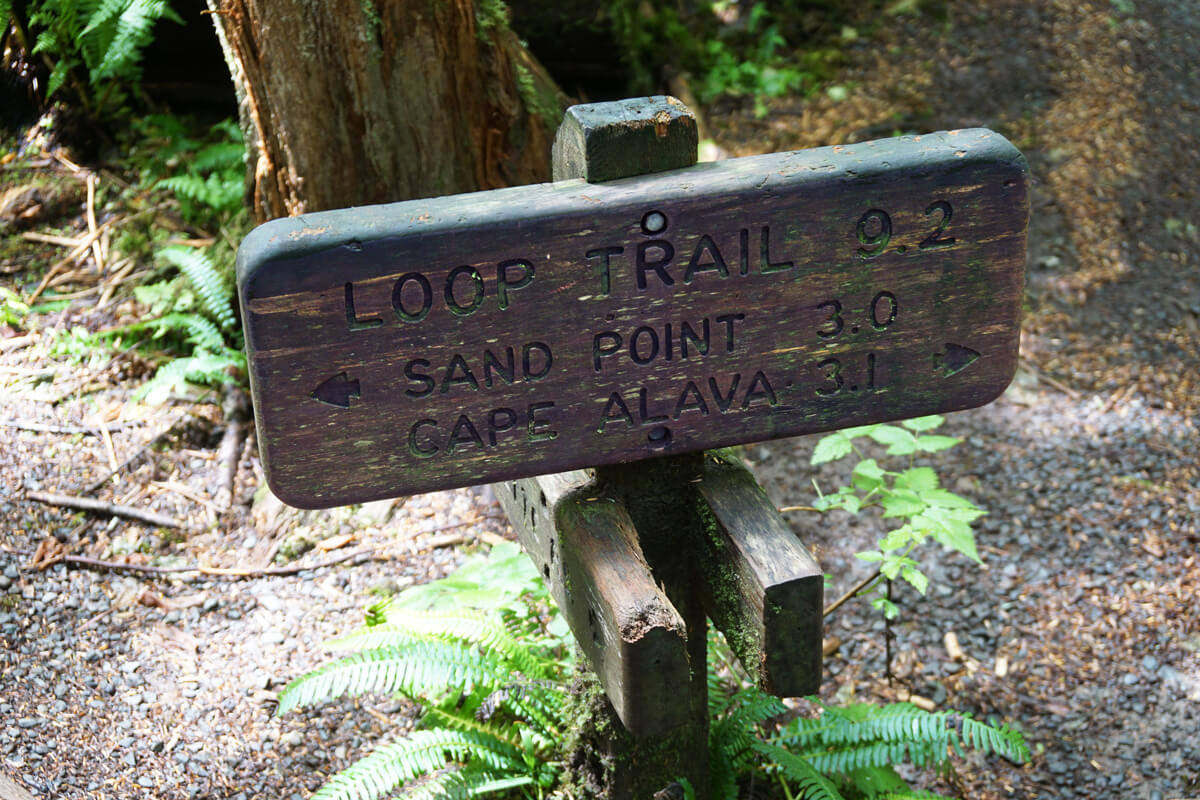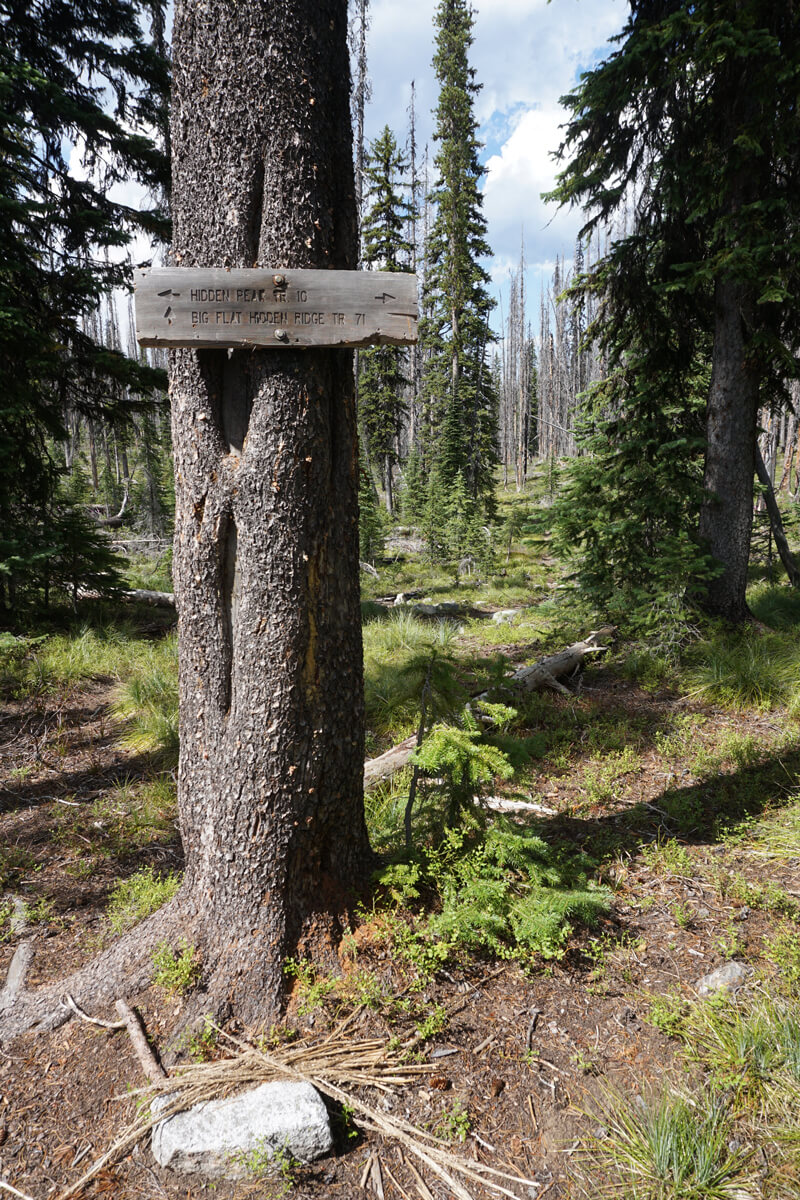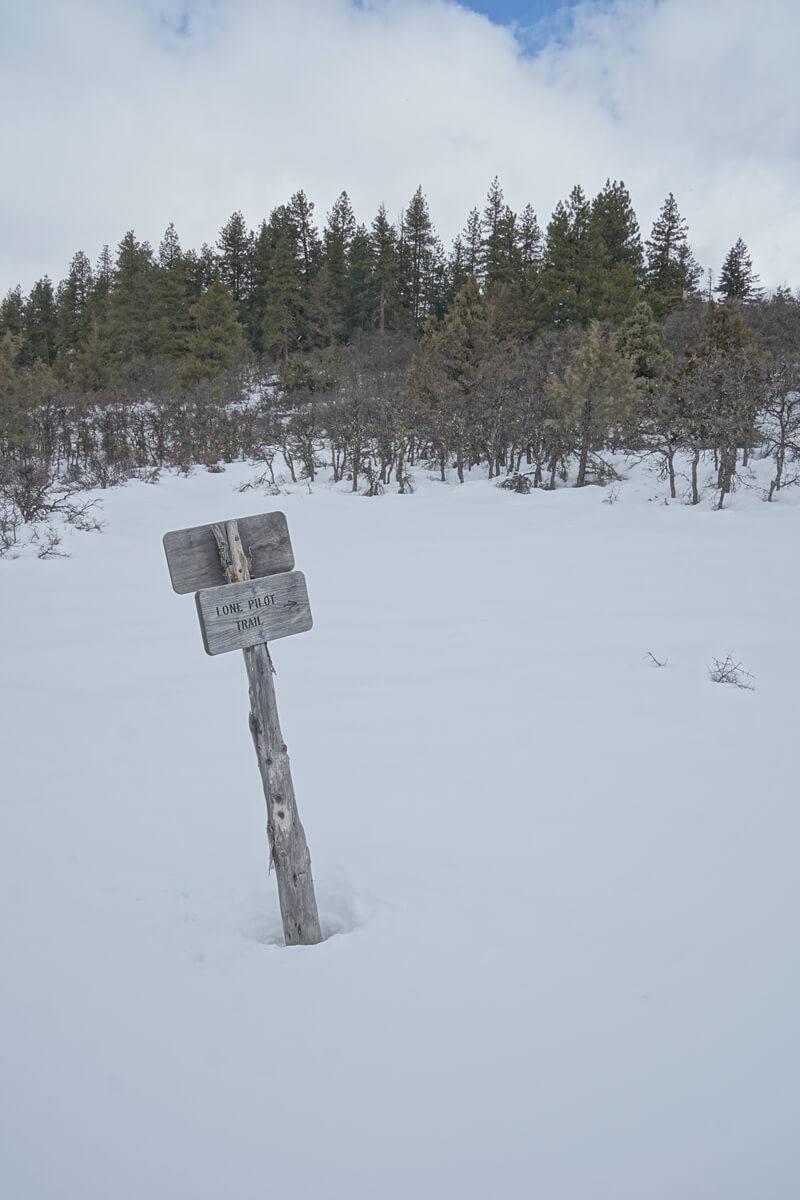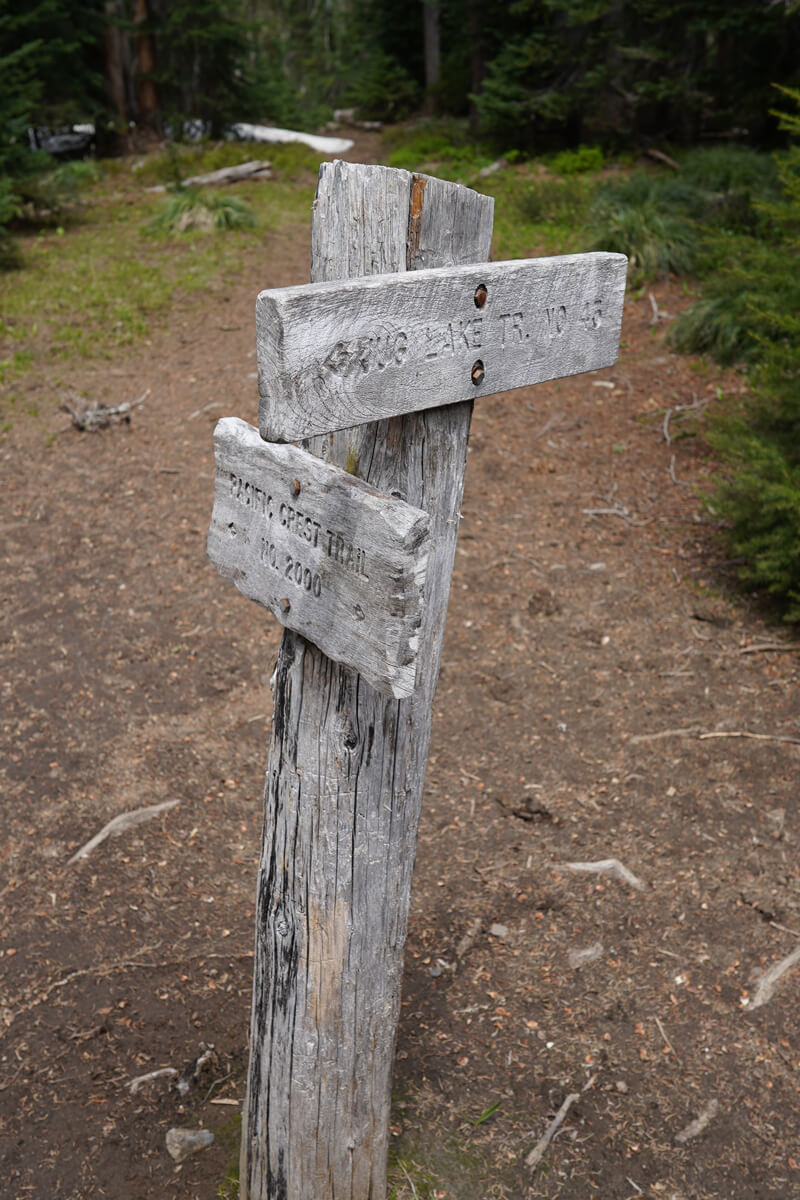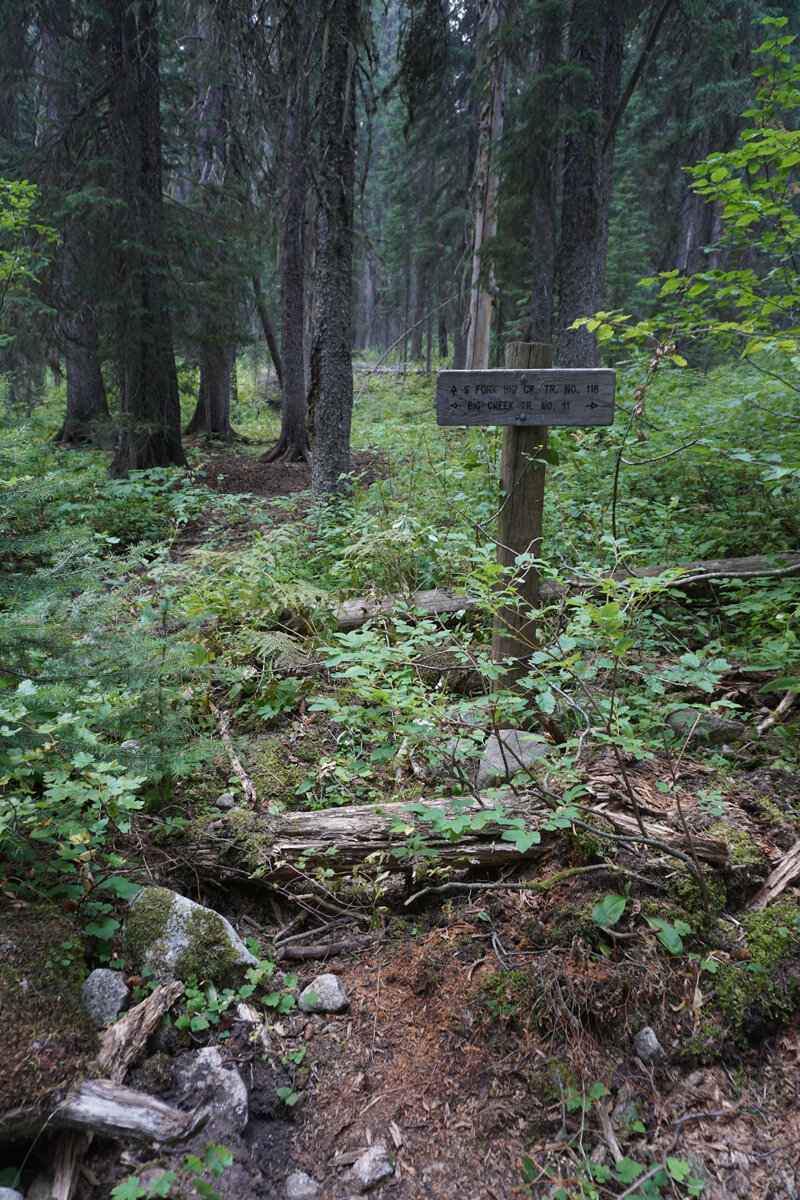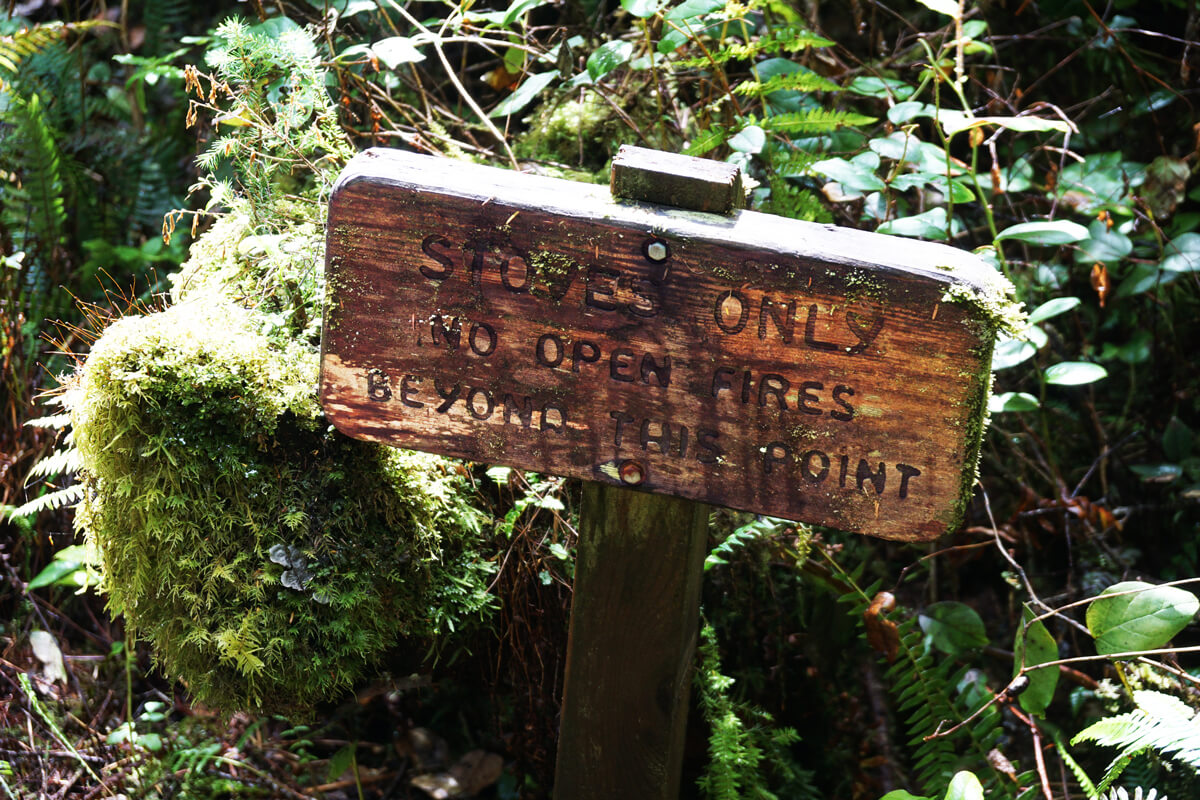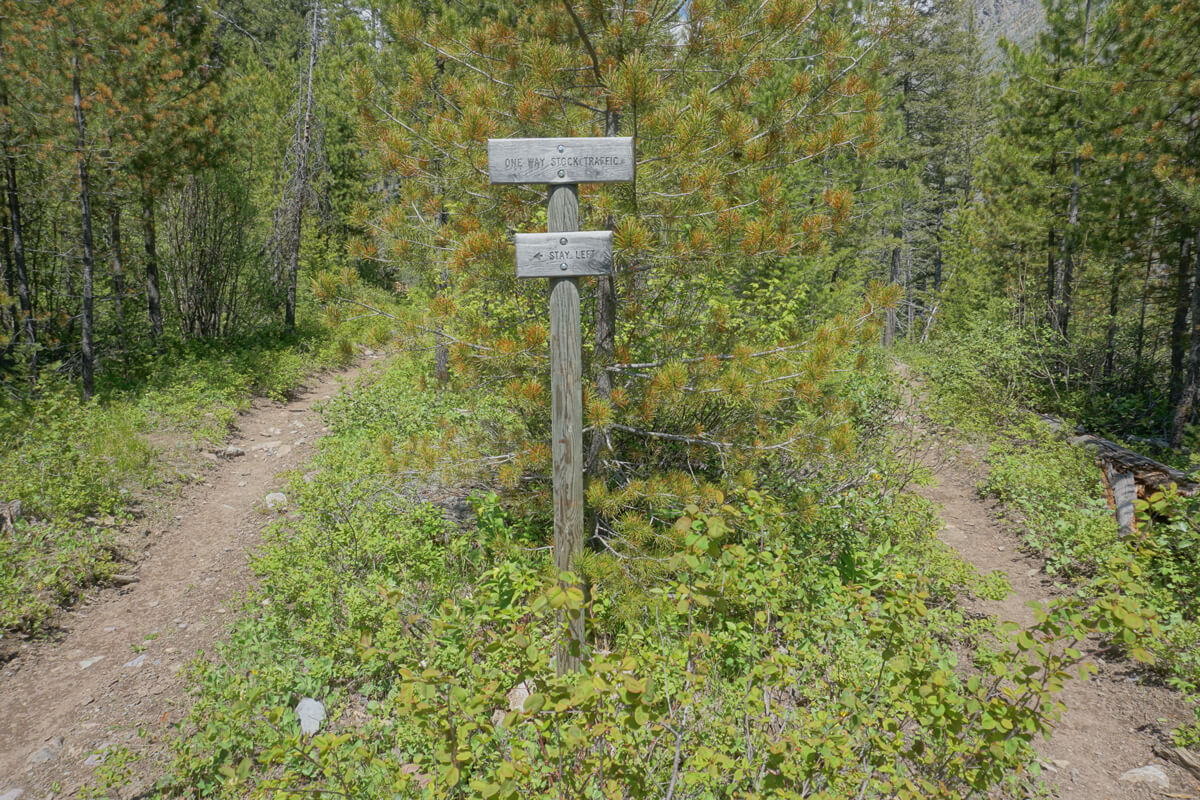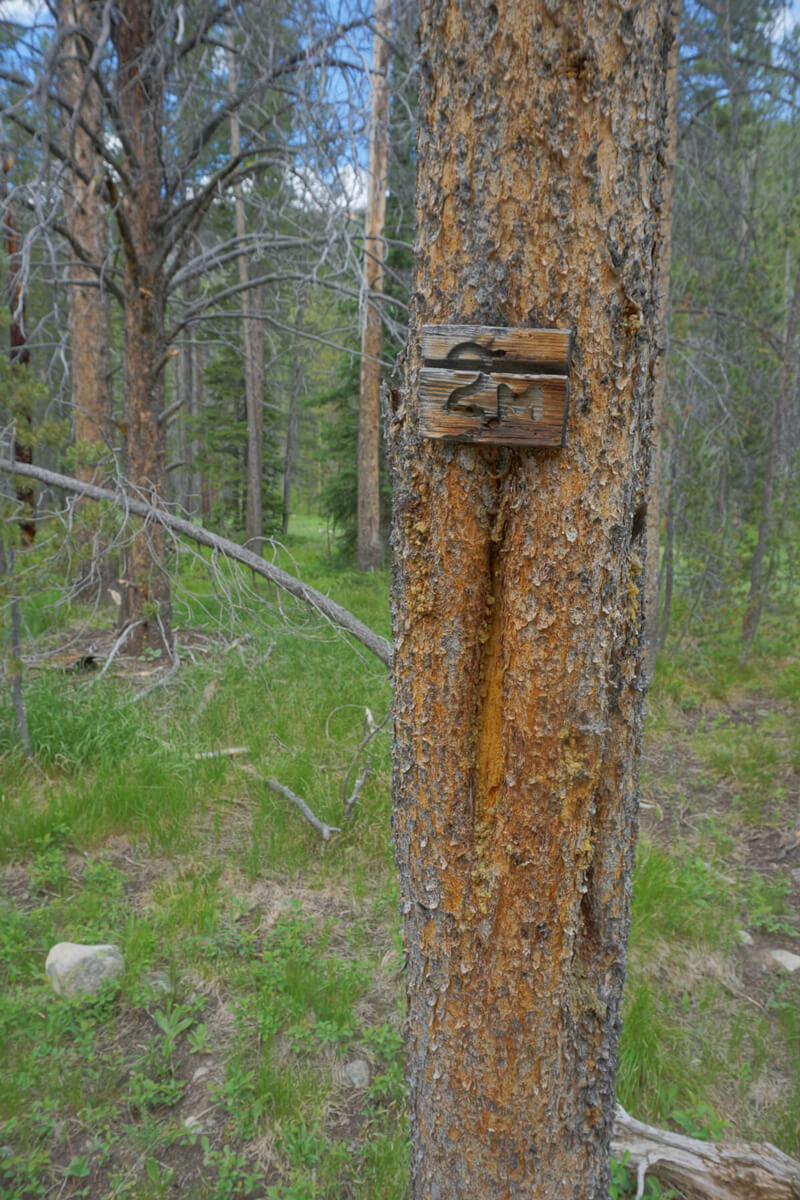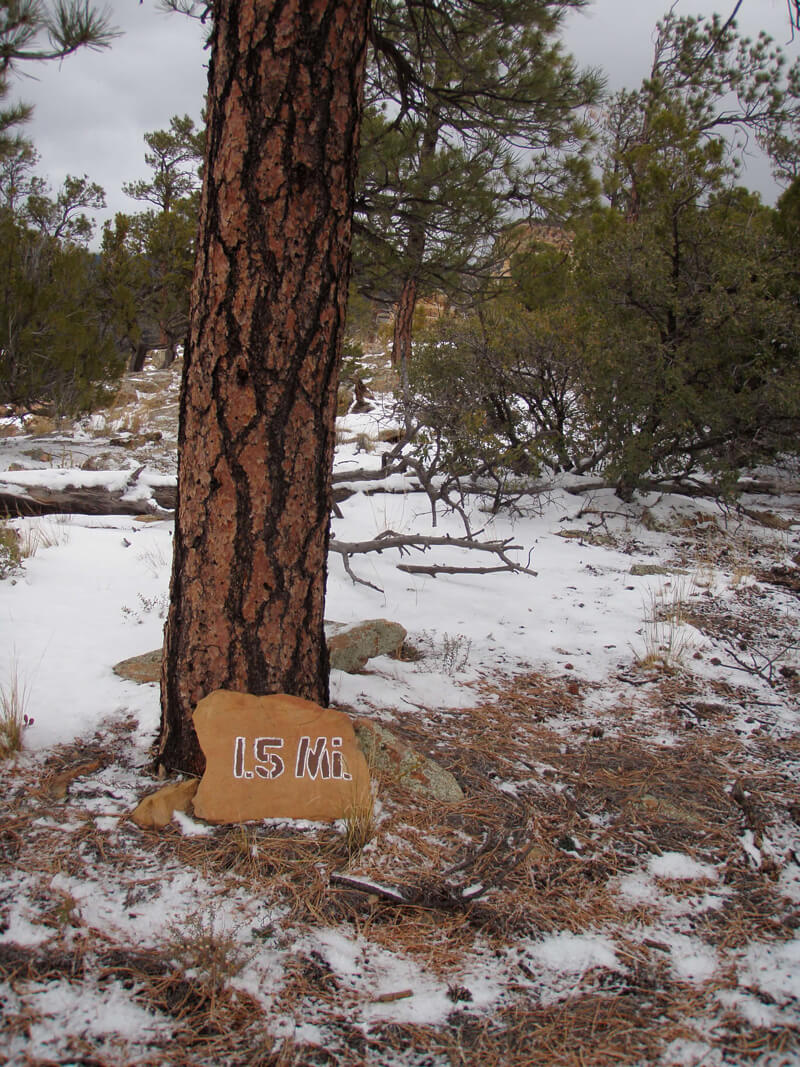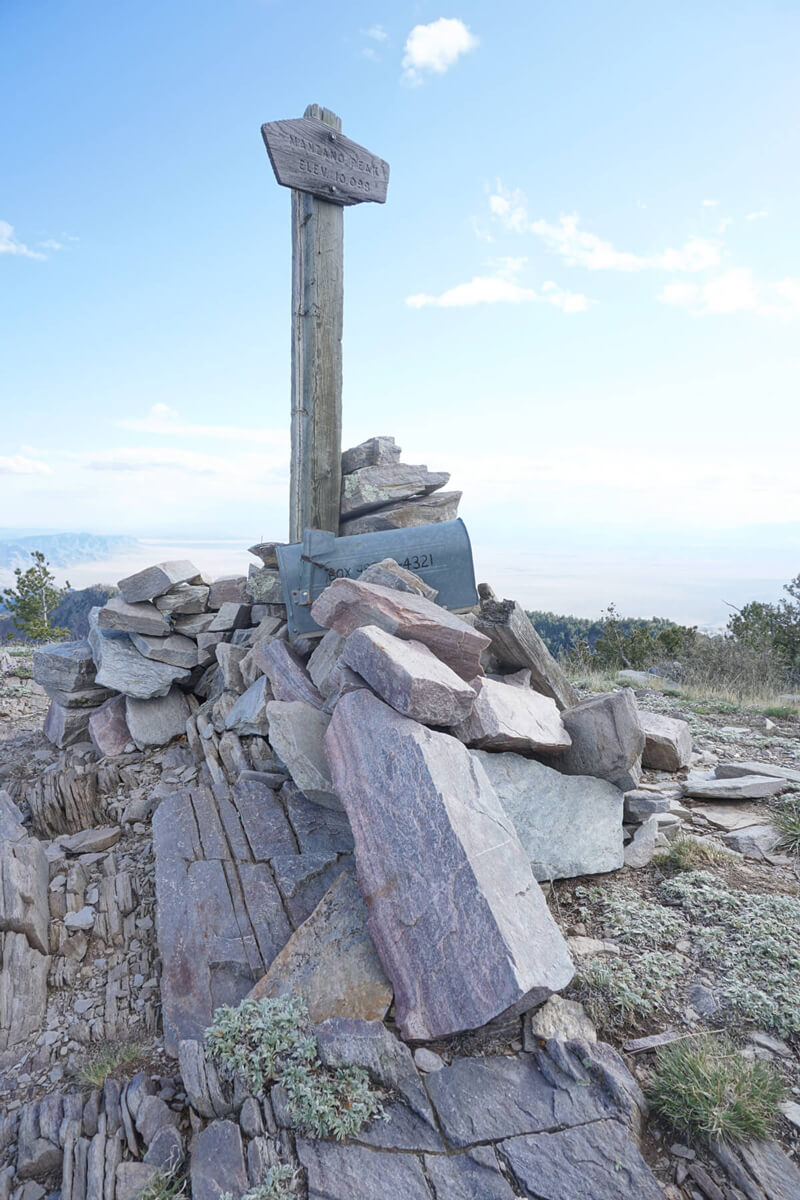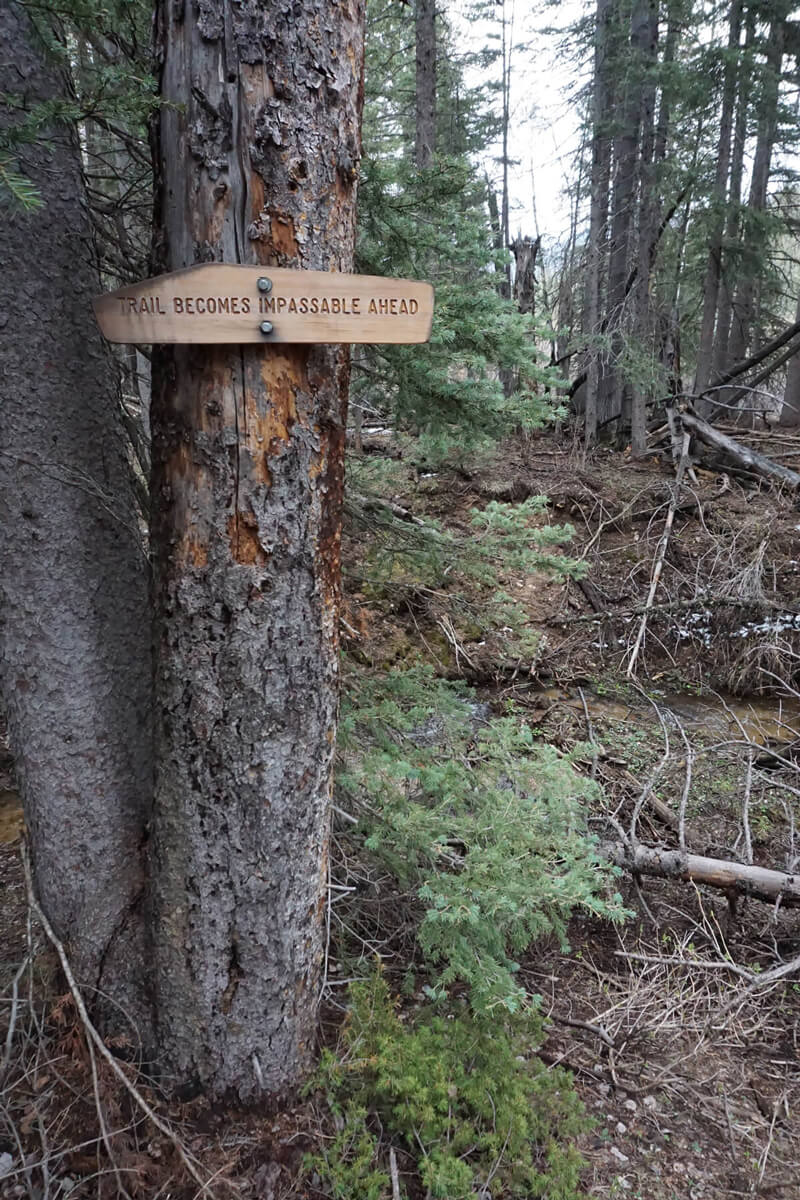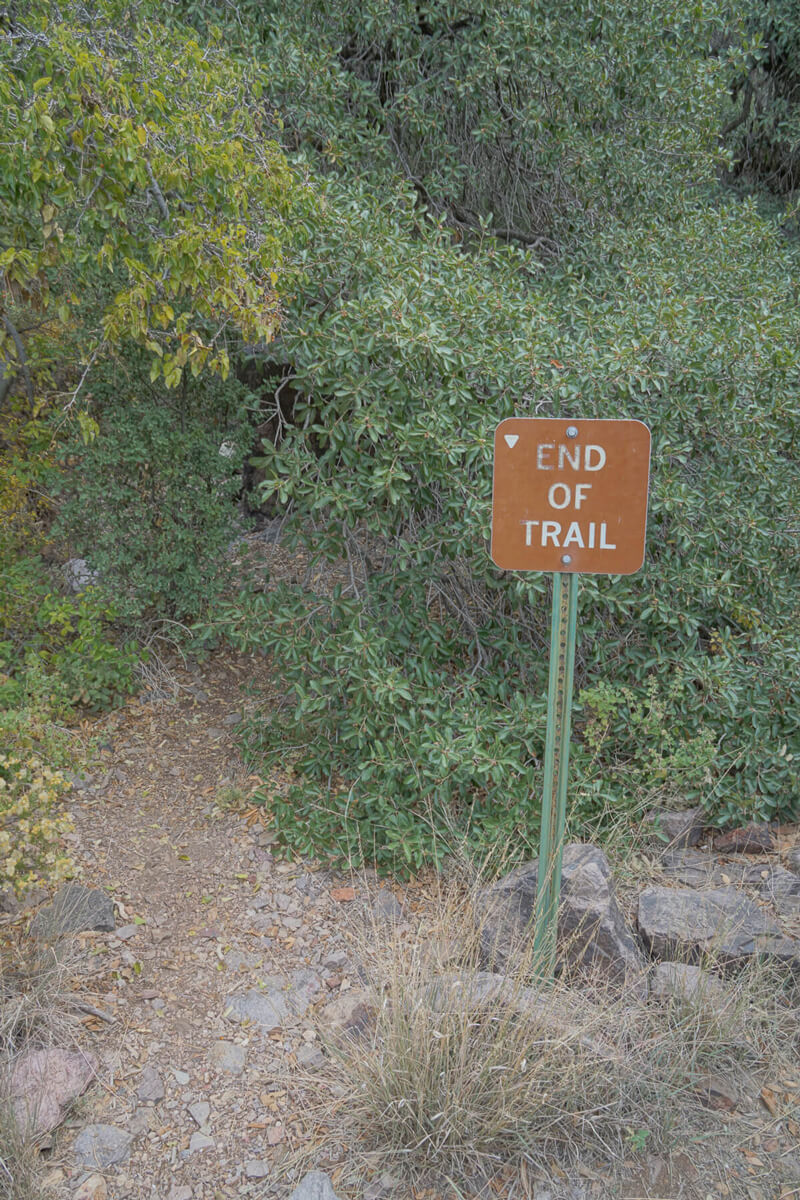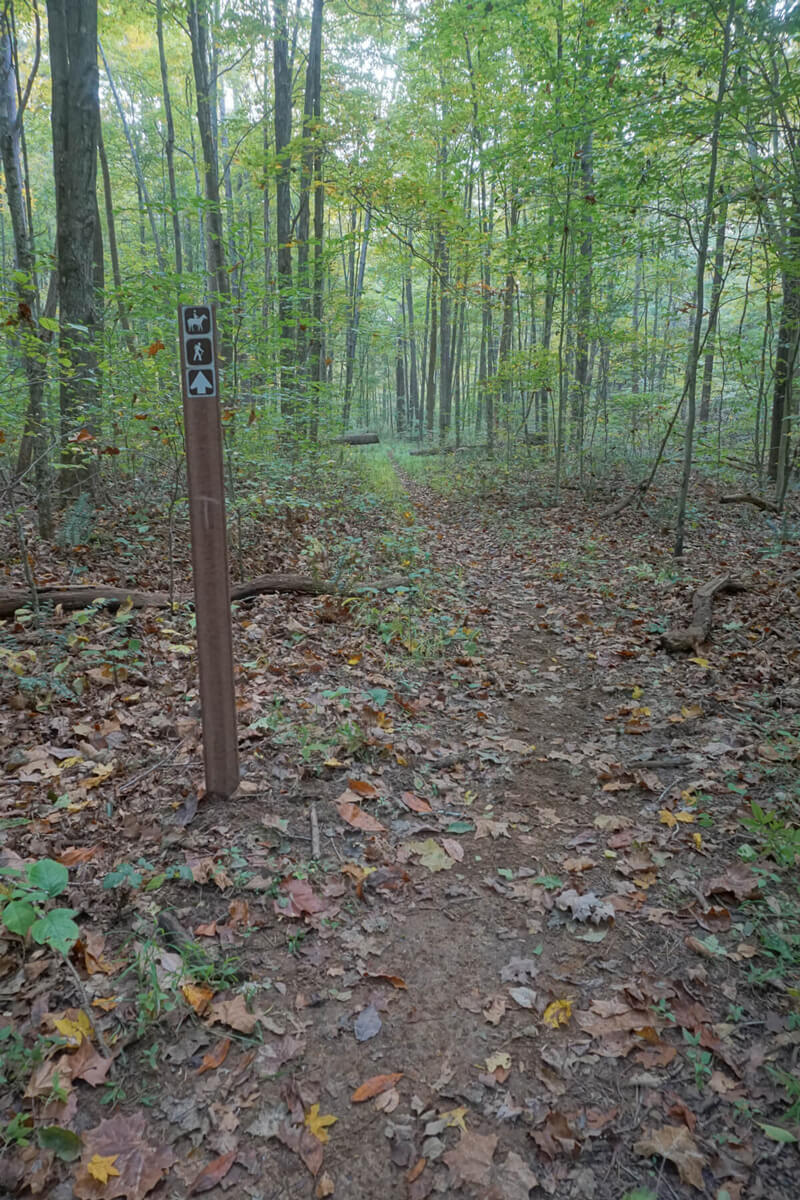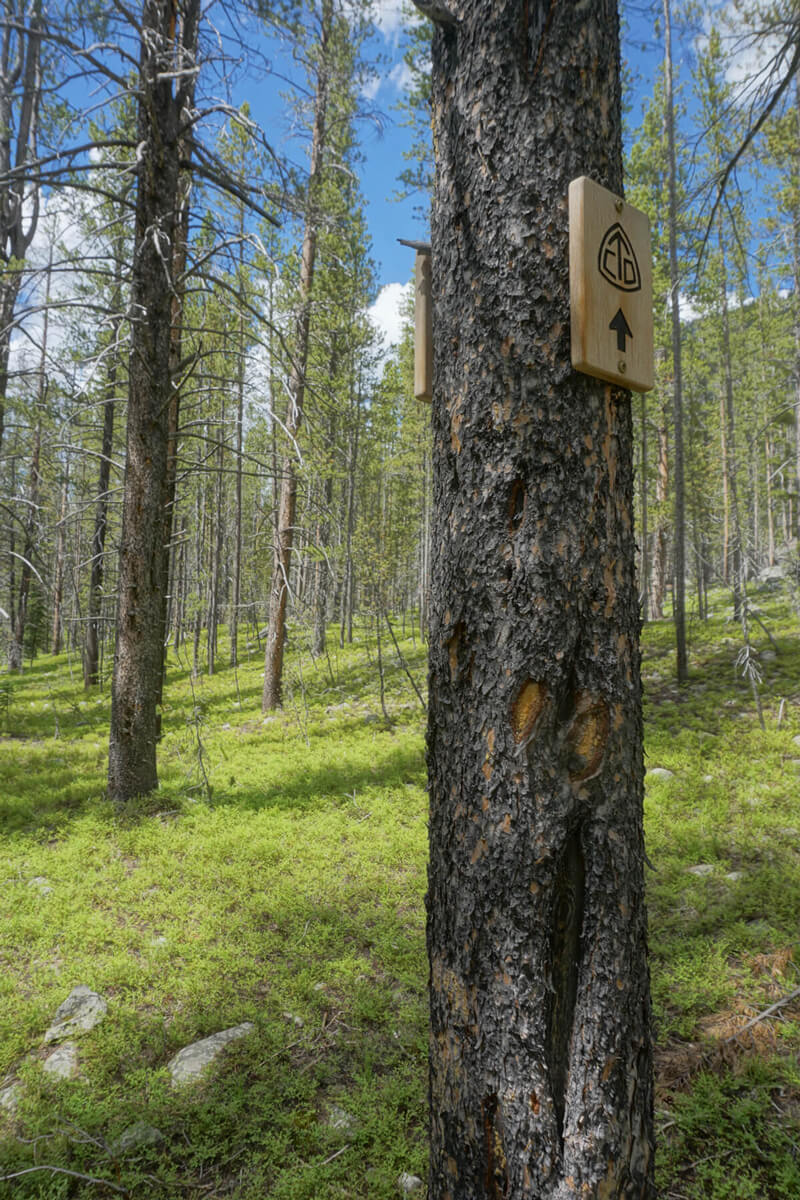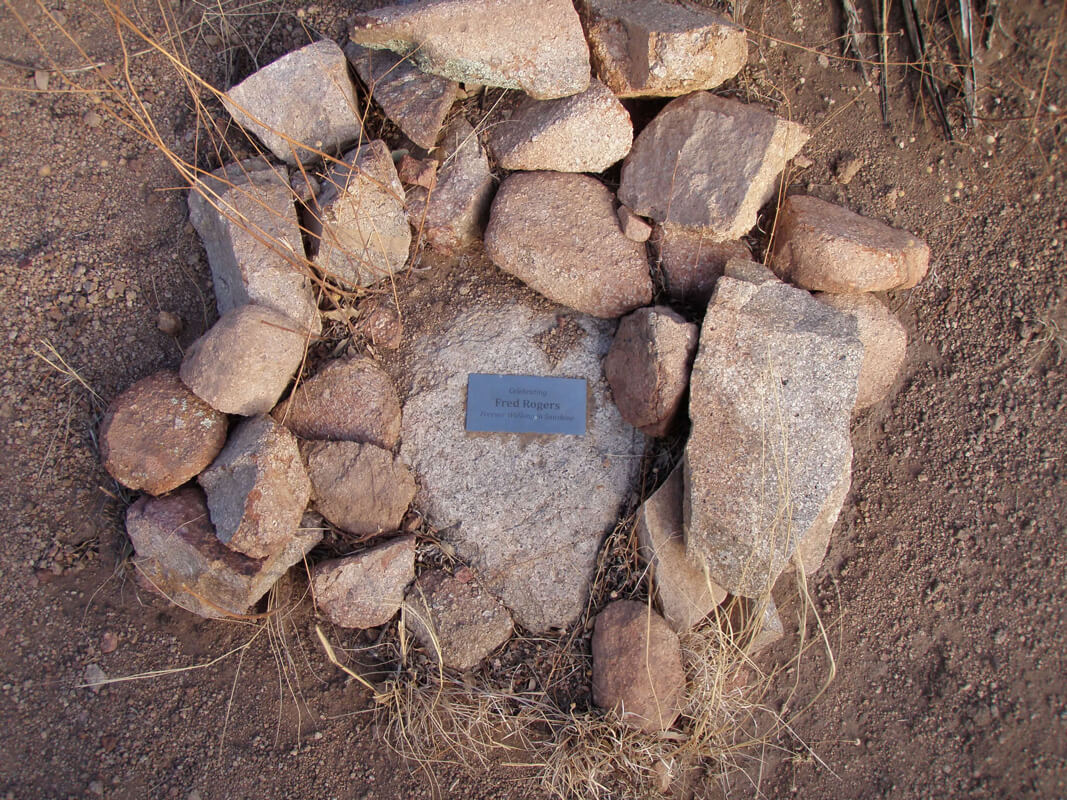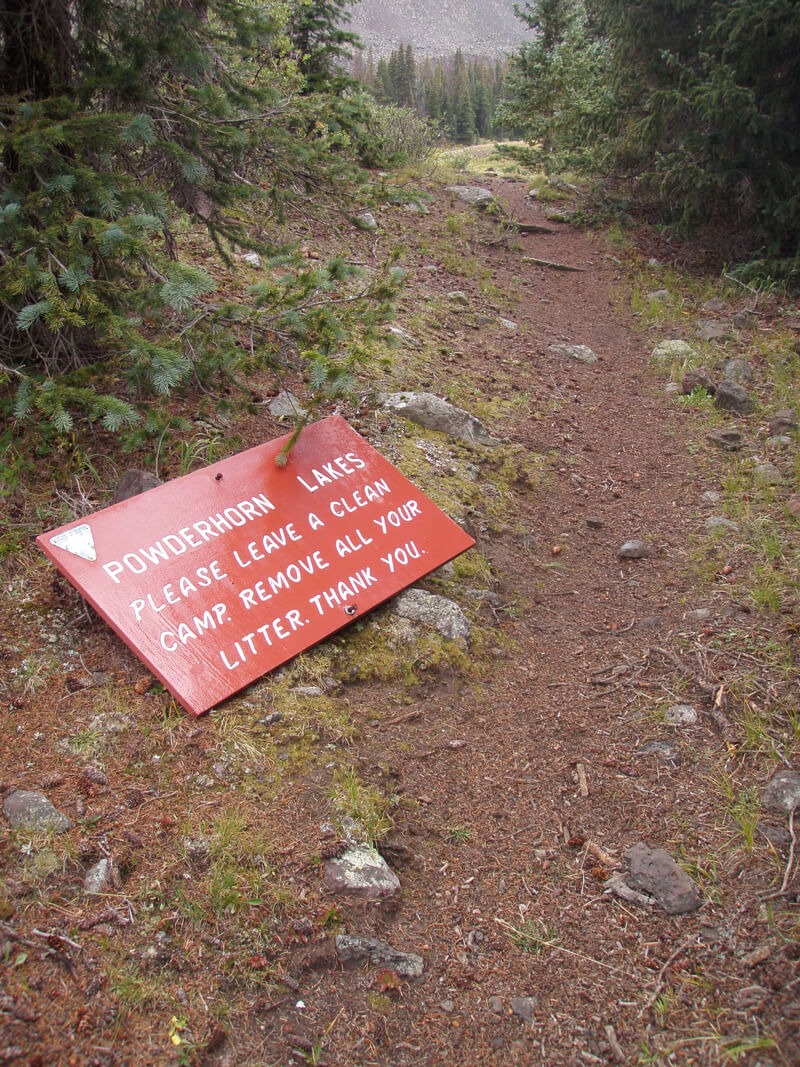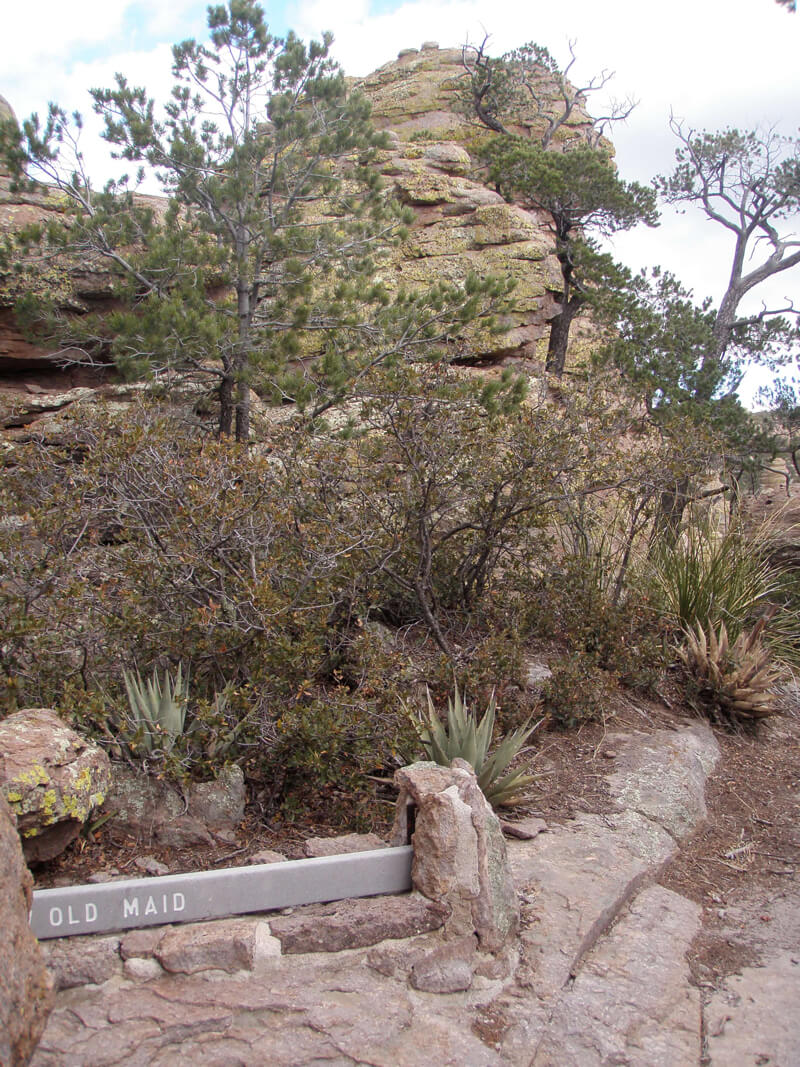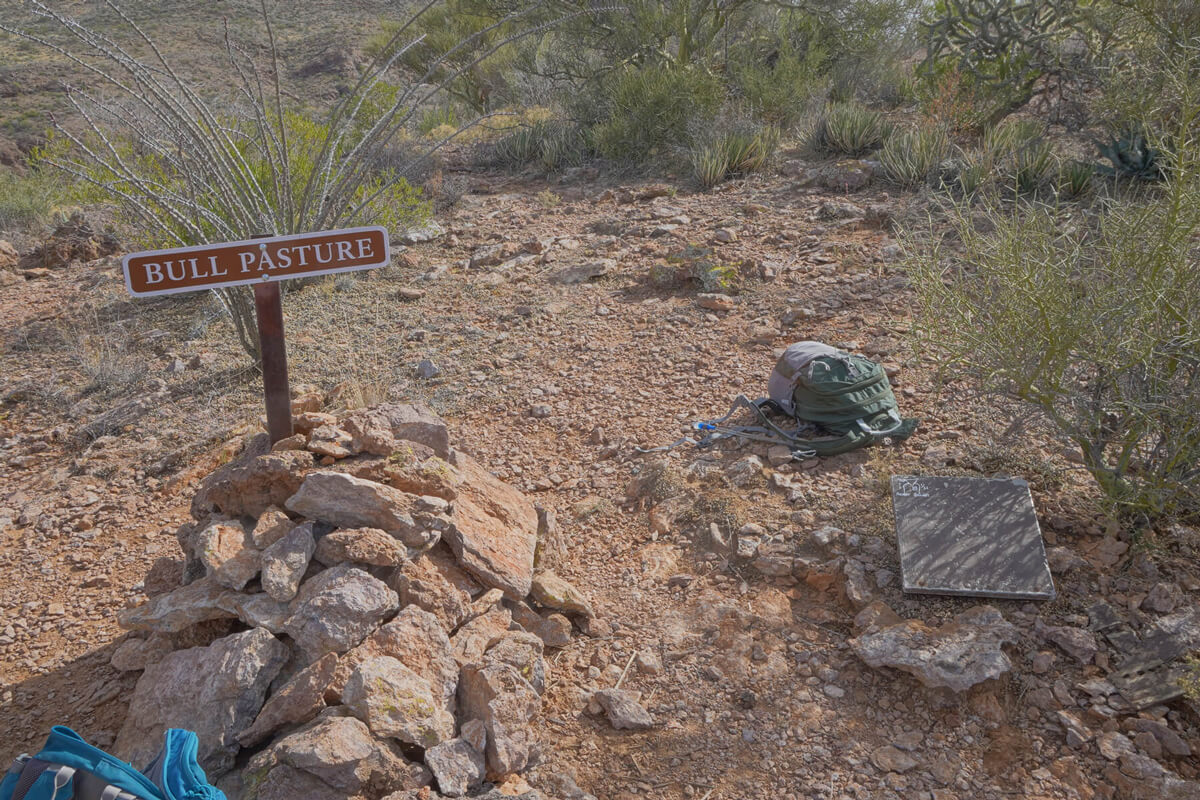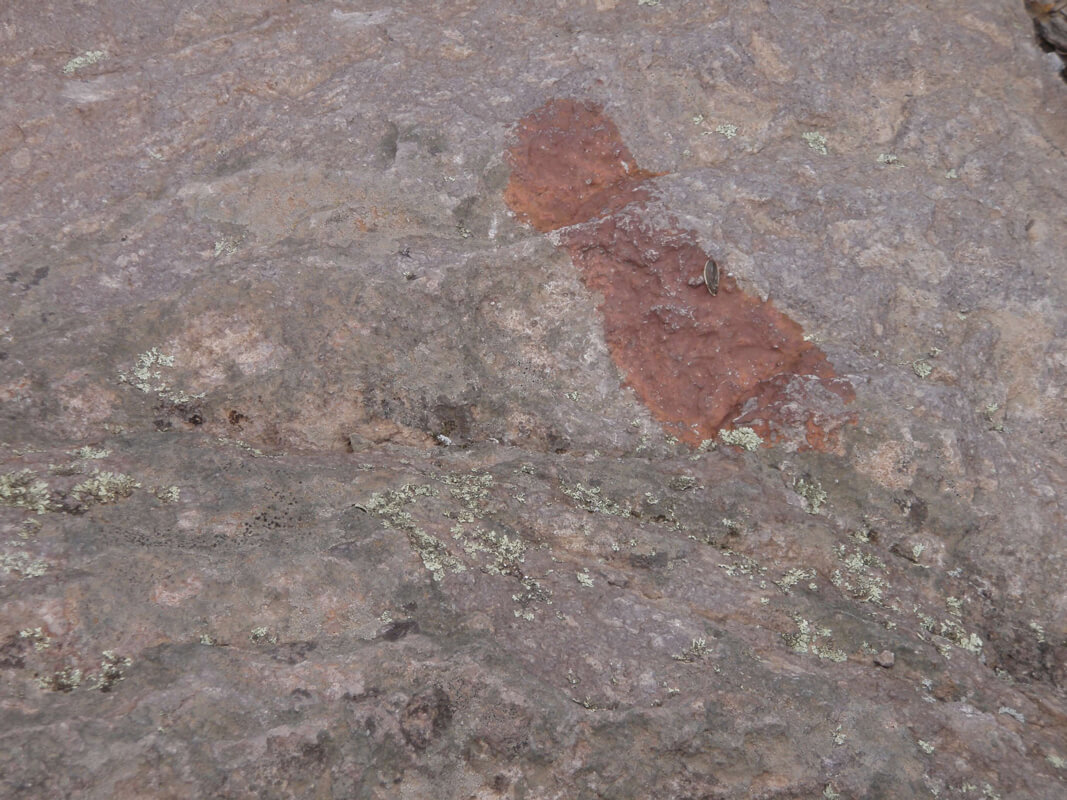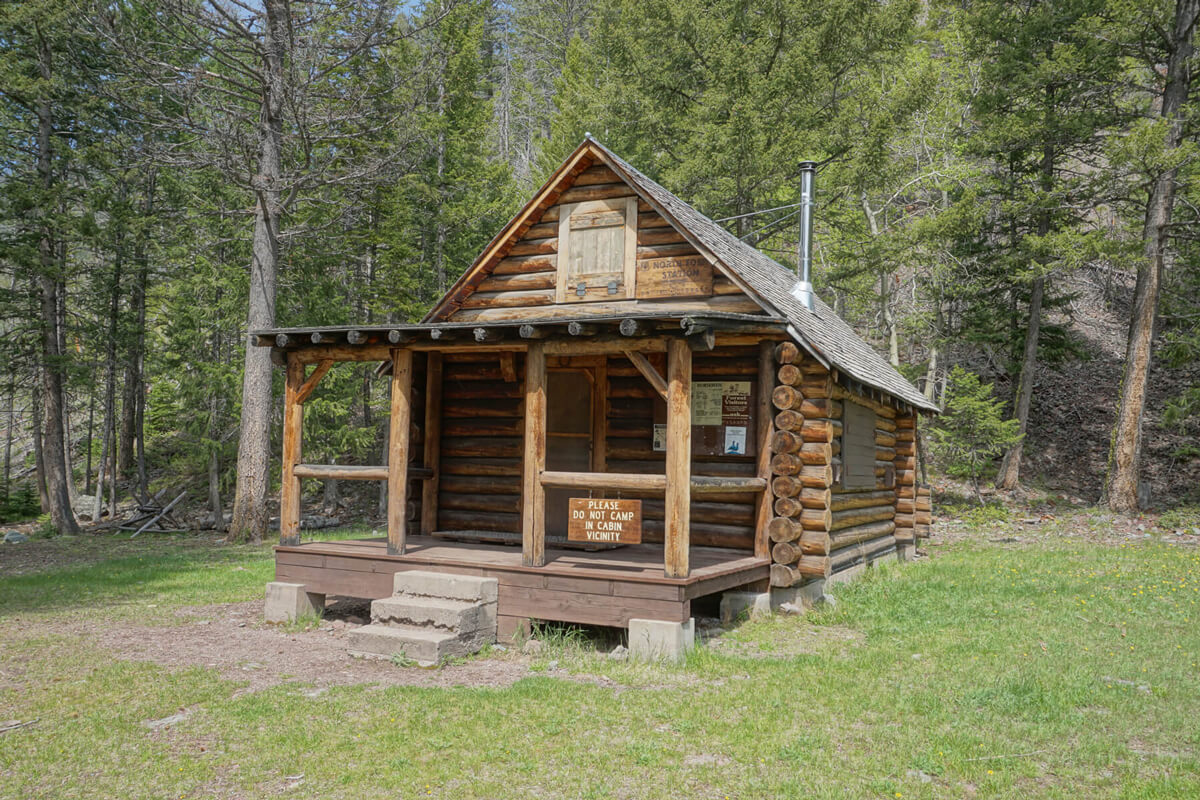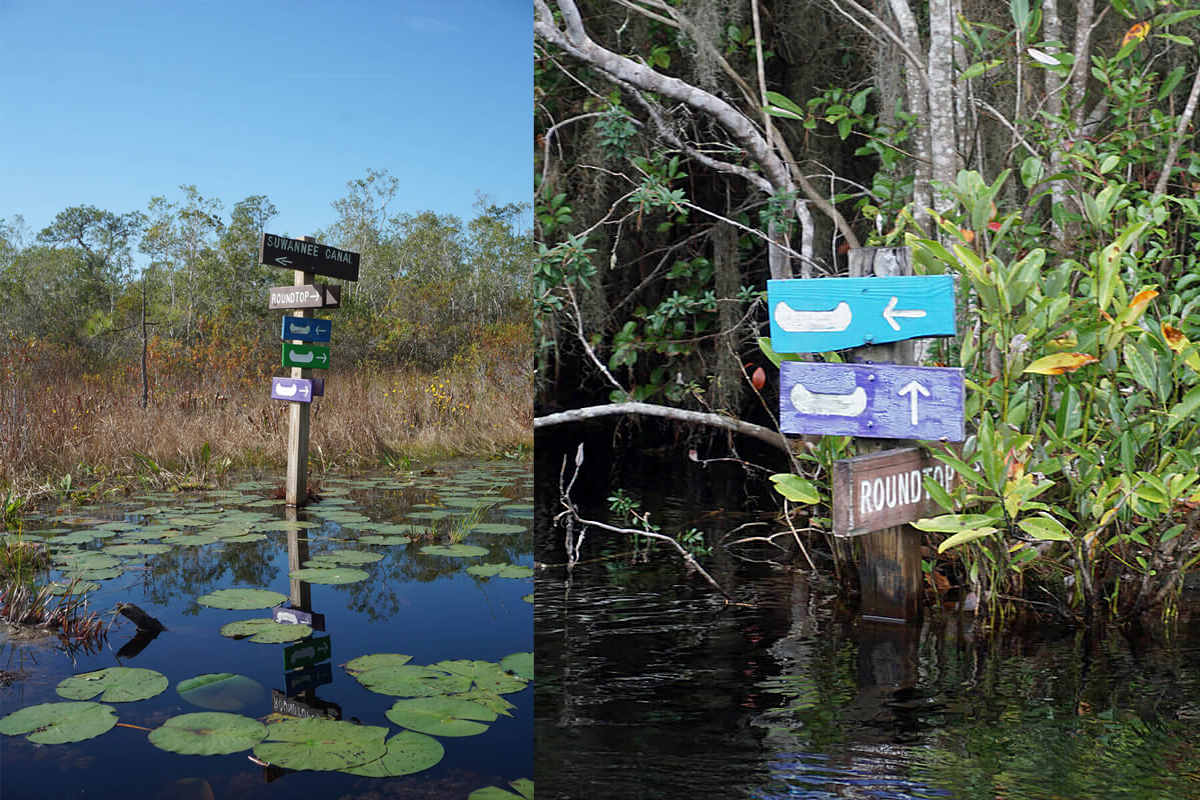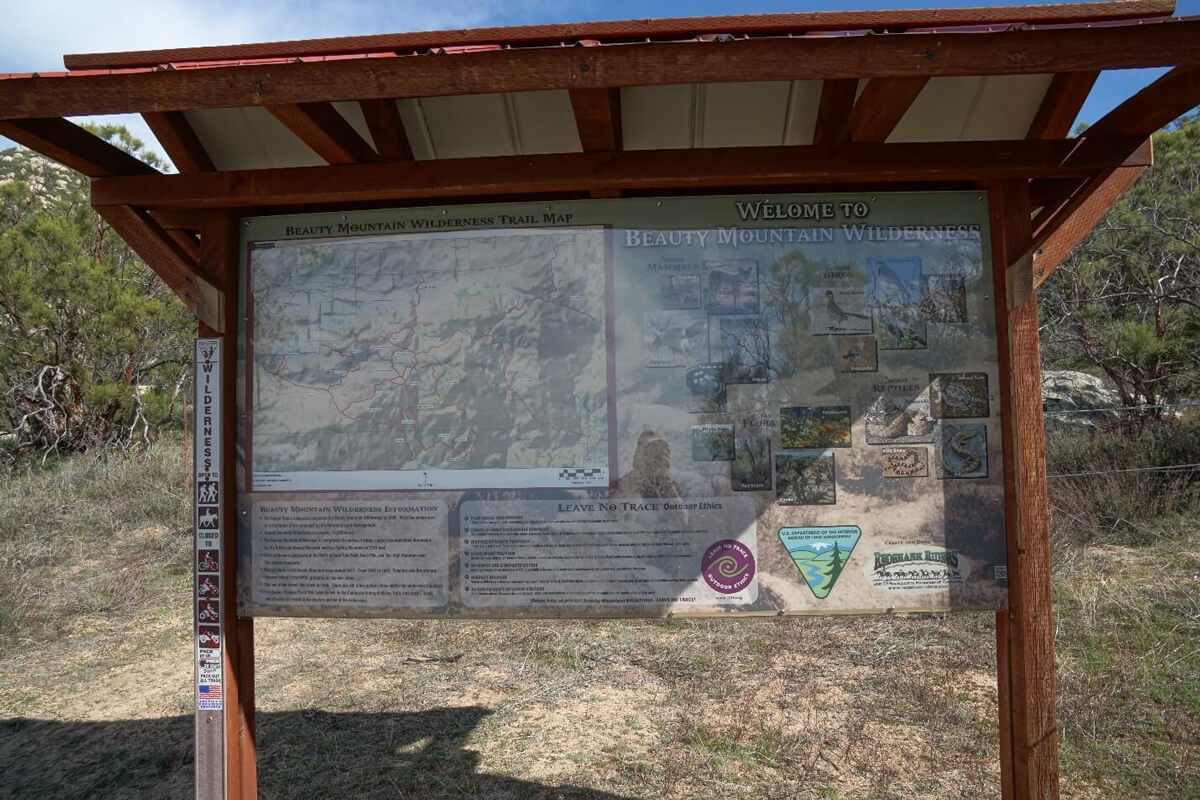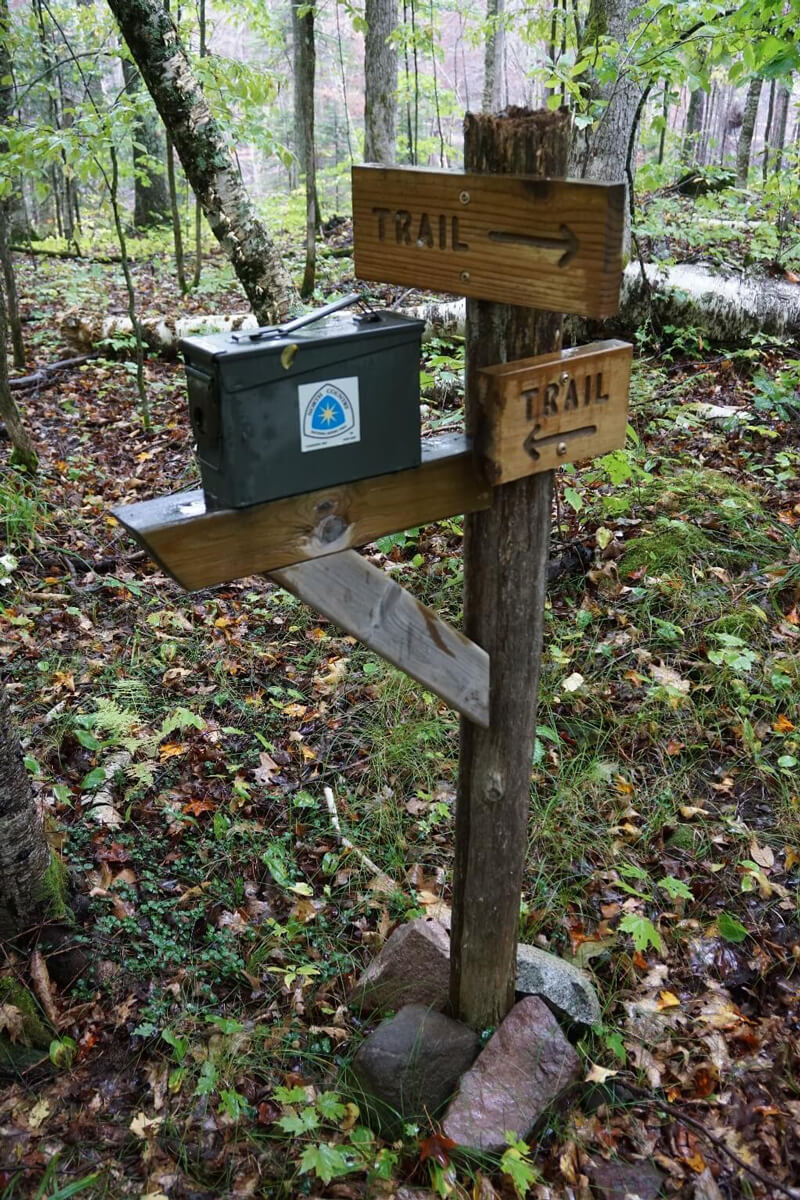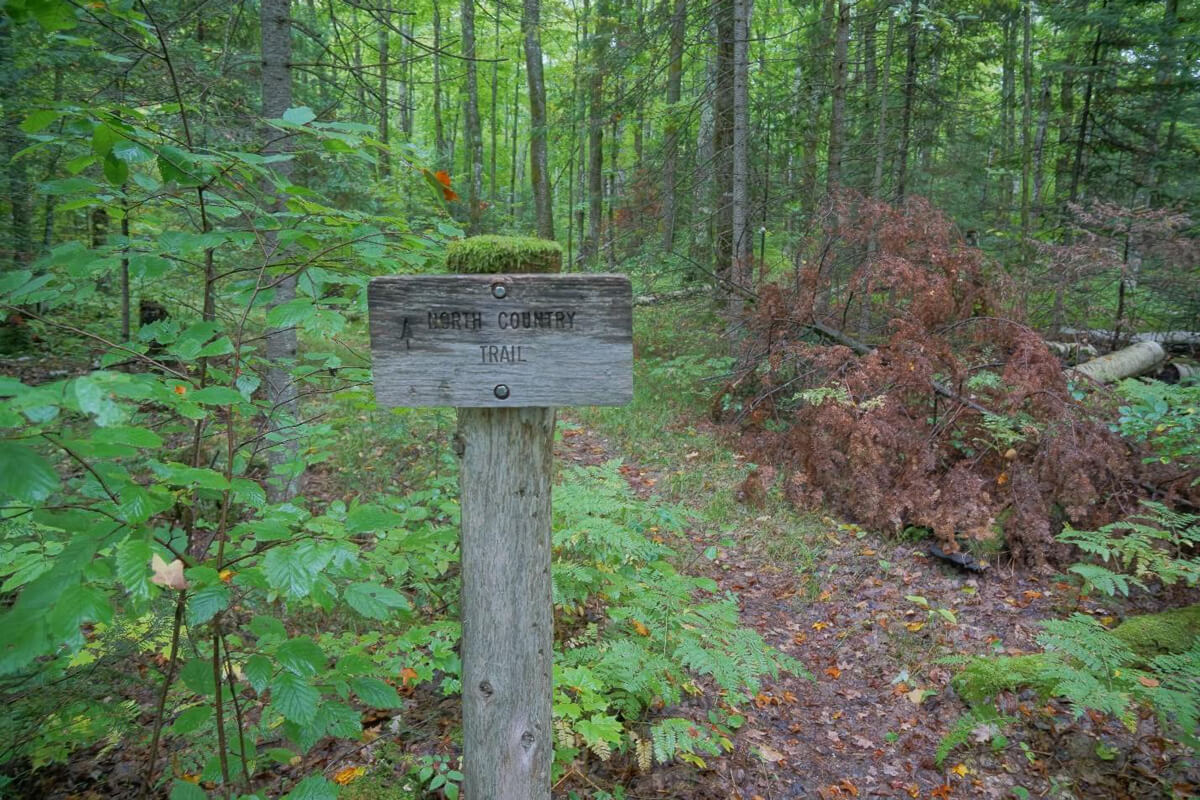Signs in Wilderness
Introduction
The Signs Toolbox provides information on signing inside wilderness. Each agency’s sign policy, guidelines, sources, and examples are provided.
Balancing Signs and Wilderness Character
The Wilderness Act of 1964 designates lands for a wilderness purpose that is unique and different from other public lands and that “shall be administered for the use and enjoyment of the American people in such manner as will leave them unimpaired for future use and enjoyment as wilderness.” Although the Act states that wilderness is for the use and enjoyment of visitors, it also tells us that it is for primitive recreation, is to remain undeveloped, and with the imprint of man’s work substantially unnoticeable. To preserve these qualities, the Wilderness Act prohibits activities that would degrade wilderness character unless the activities are the minimum required for administering the area as wilderness.
Signs are considered installations (i.e., anything made by humans that is not intended for human occupation and is left behind when the installer leaves the wilderness) and prohibited by the Wilderness Act unless found to be the minimum necessary for administration of the area as wilderness (see Section 4c of the Wilderness Act). Because the law does not provide more specific direction, the managing agencies have developed policies to implement the law (The Wilderness Act) and strike a balance between protecting the wilderness resource, addressing visitor needs, and limiting the number of installations. Providing just what is needed and no more contributes to wilderness character by maintaining an undeveloped condition and encouraging visitors to rely on themselves, in contrast to lands which exhibit a higher level of human modifications.
By combining the Wilderness Act’s stated purpose (Section 2a) and definition (Section 2c) of wilderness, agencies have determined that a certain level of signing may be appropriate in wilderness if it is the minimum necessary for administering the area as wilderness. Signs in wilderness are sometimes used as a management tool for a system of trails, water routes, or access points, or possibly to designate campsites. In other cases, such as areas without trails, signs may be inappropriate in wilderness. The decision to maintain or install signs in wilderness should be made through the Minimum Requirements Analysis using the Minimum Requirements Analysis Framework. If signs are determined to be the minimum necessary, the design, content, size, or color, is often dependent on agency, regional, or unit guidelines. For example, the BLM Policy states, “Except for regulatory signs, signs should appear to be made of native materials. Do not use paint, either on trees or rocks, to mark trails.”
Cairns are stacks of rocks and can take on different shapes such as Bates cairns or conical-shaped cairns. In some cases cairns are user-created for recreational purposes and are unwanted by the management agency. In other cases Cairns, rock walls, or other rock piles may have been installed long ago and may have historical and/or cultural significance. Cairns may be created and maintained by wilderness management agencies to mark trails, depending on their policy. Not all agencies use cairns as trail guides. The use of cairns, as a type of trail sign, in wilderness should still be the minimum necessary for managing the area as wilderness.

Figure 1. A Bates cairn at Acadia National Park (Image courtesy of Brandon Hoogerhyde)
Signs and posters that are displayed at trailheads, visitor contact stations, and other venues outside of wilderness can be effective communication tools for wilderness information and education. The educational public purpose of wilderness, mentioned in the Wilderness Act, does not require interpretation inside wilderness (e.g. signs). For more information on this type of signage, visit the Interpretation and Education Toolbox.
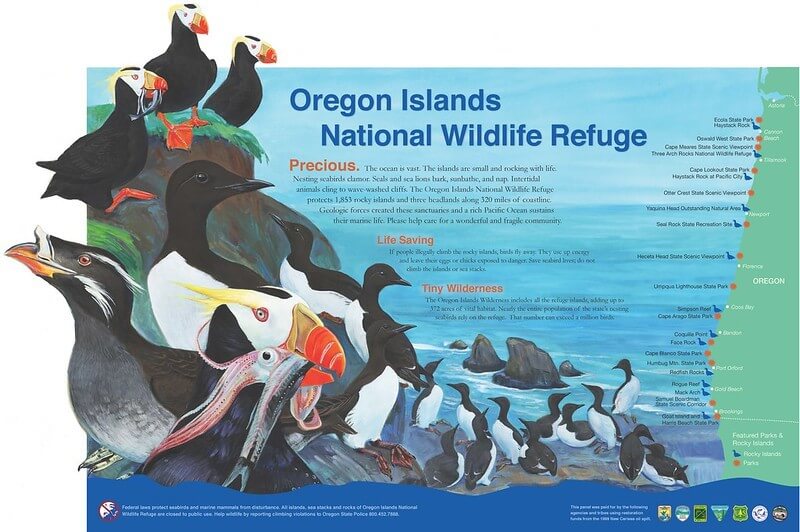
Figure 2. Interpretive panel outside the wilderness boundary that includes wilderness information, displayed at Oregon Islands National Wildlife Refuge.
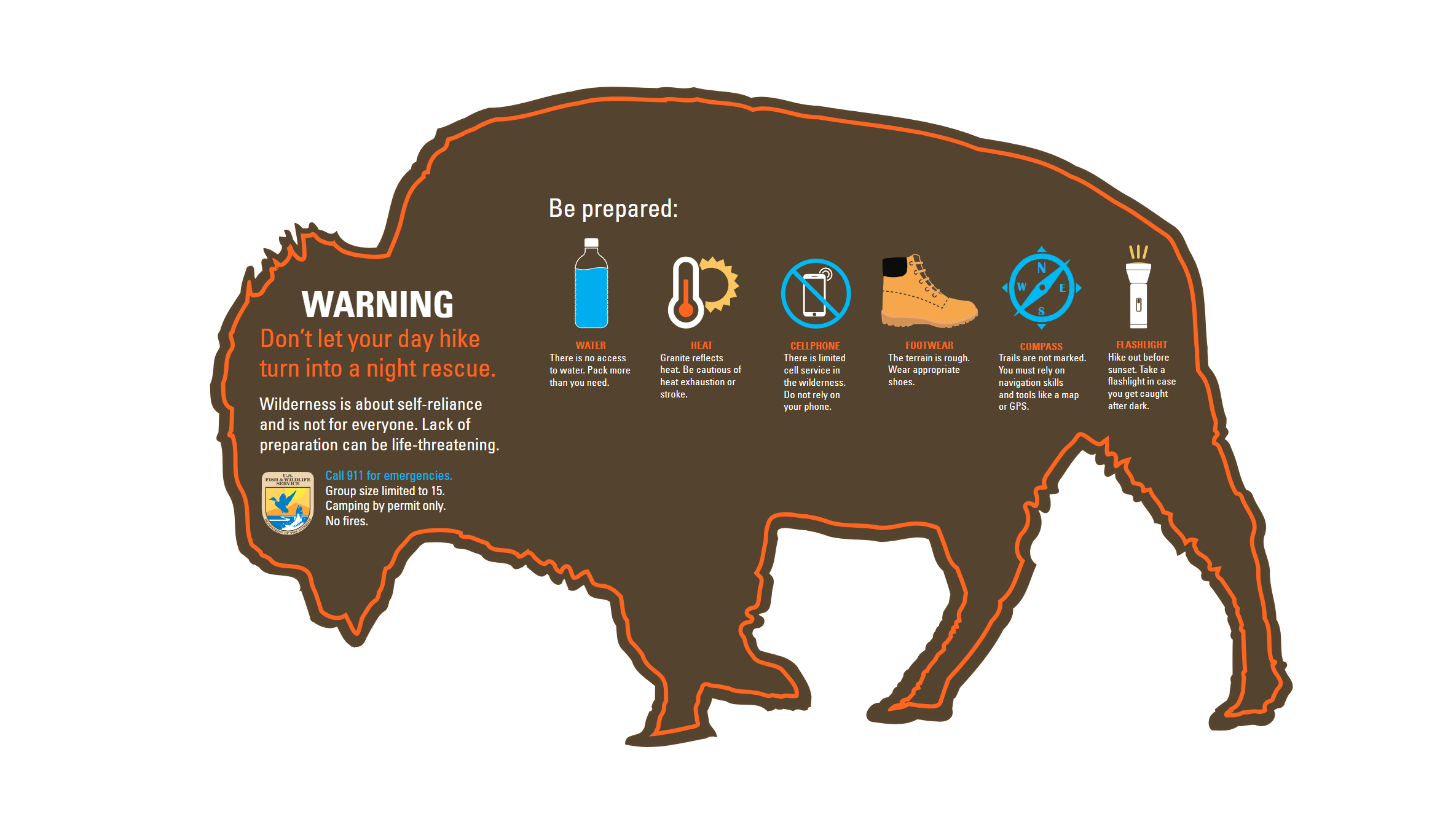
Figure 3. Interpretive sign outside wilderness that includes wilderness safety, permit, and restriction information.
Direction for National Scenic Trails Markers
For those areas where the National Trails System intersects the National Wilderness Preservation System the following from The National Trails System Act (PL 90-543) may be applicable:
Section 7(c)
The Secretary of the Interior and the Secretary of Agriculture, in consultation with appropriate governmental agencies and public and private organizations, shall establish a uniform marker, including thereon an appropriate and distinctive symbol for each national recreation, national scenic, and national historic trail. Where the trails cross lands administered by federal agencies such markers shall be erected at appropriate points along the trails and maintained by the federal agency administering the trail in accordance with standards established by the appropriate Secretary...
A minimum requirements analysis should be used on a case by case basis to determine what the “appropriate points” in wilderness along each trail would be.
Agency Wilderness Sign Policy and Guidelines
BLM
-
BLM Manual 6340—Management of BLM Wilderness
-
“C. Managing Resources and Resource Uses in Wilderness;
-
5. Cultural Resources; d. Structures and installations; e. Signing and fencing. Law enforcement signs and protective fences or other barriers should be placed only if they have been determined to be the minimum necessary structure or installation through the use of the MRDG (See Appendix B in this manual). Interpretive signs should not be placed in the wilderness, but may be appropriate at trailheads or other entry points.”
-
6. Education and Interpretation; b. Interpretive and educational signs and displays. With the exception of boundary signs and signs necessary to protect visitor safety or sensitive wilderness resources, all interpretive and educational displays and signs must be located outside of wilderness areas. More information on signs in wilderness can be found under section 1.6.C.13.c.iii.
-
13. Recreational Use; c. Primitive recreation; i. Structures and installations; A. Facilities that make recreation more convenient or safer may be provided only where they are the minimum necessary to protect the wilderness character, typically only in the following circumstances: I. To protect the Natural quality, or other qualities of wilderness character. For example, a bridge may be placed across a stream to protect fish habitat. Regulatory signs may be placed within wilderness areas as a management tool to correct specific problems and protect Unique or Other Features such as cultural sites; c. Primitive recreation; i iii. Signs. Only a minimum of signs should be installed within wilderness areas. Instead, emphasis should be on making accurate maps, route descriptions, or brochures available to visitors. A. Signs with directional arrows may be placed at trail junctions; trail signs may also be placed for marking routes where animal trails may create confusion. No signs should be used to indicate streams, lakes, mountain peaks, passes, or other points of interest. Although mileages may appear on signs, mile markers may not be used. B. In areas without trails, signs or cairns should be placed only to indicate preferred routes of travel to prevent resource damage, and not as a convenience to the visitor. C. Except for regulatory signs (see Unconfined Recreation, below), signs should appear to be made of native materials. Do not use paint, either on trees or rocks, to mark trails.
-
-
FWS
- FWS Policy (610 FW 2.34, 2.35)
-
(new draft policy) 610 FW 2.20: Under what circumstances may the Service allow structures and installations in wilderness? Section 4(c) of the Wilderness Act prohibits new structures and installations in wilderness; however, in certain limited situations, there may be an exception to a prohibited use (see sections 2.6 and 2.7).
-
A. If we find that structures and installations are not the minimum requirement, they must be removed or allowed to naturally deteriorate. We do not have to retain all historic structures and installations; we must evaluate them through the processes found in the National Historic Preservation Act, Sections 106 and 110, before removal.
-
B. Wilderness users must be self-reliant for shelter. We must not construct, maintain, or restore any structure or installation in wilderness for administrative convenience, economy of effort, or convenience to the public. If we find that a structure or installation is the minimum requirement, we must design, construct, or maintain it to blend into the wilderness landscape as unobtrusively as possible, using native materials to the greatest extent practical.
-
- FWS Sign Handbook 2019
-
NPS
NPS Management Policies, 2006, 6.3 Wilderness Resource Management: 6.3.10.4 Signs
Signs detract from the wilderness character of an area and make the imprint of man and management more noticeable. Only those signs necessary for visitor safety or to protect wilderness resources, such as those identifying routes and distances, will be permitted. Where signs are used, they should be compatible with their surroundings and the minimum size possible.
9.3 Visitor Facilities: 9.3.1.1 Signs
Signs will be carefully planned and designed to fulfill their important roles of conveying an appropriate NPS and park image and providing information and orientation to visitors. Each park should have an approved parkwide sign plan based on Service-wide design criteria and tailored to meet individual park needs. Entrance and other key signs will be distinctively designed to reflect the character of the park while meeting Service-wide standards for consistency.
Signs will be held to the minimum number, size, and wording required to serve their intended functions and to minimally intrude upon the natural and historic settings. They will be placed where they do not interfere with park visitors’ enjoyment and appreciation of park resources. Roadside information signs are subject to the standards established in the National Park Service Sign Manual. Interpretive signs will be guided by sign and wayside exhibit plans.
(See Signs 6.3.10.4; Visitor Safety 8.2.5.1; Traffic Signs and Markings 9.2.3; Navigation Aids 9.2.5. Also see Director’s Order #52C: Park Signs)
USFS
Wilderness is designated as an area that is "for the use and enjoyment of the American people" and it "opportunities for primitive recreation". But it is also an area that is undeveloped and in "contrast to those areas where man and his works dominate the landscape." To meet these mandates, expressed in The Wilderness Act of 1964, agencies have developed policies and guidelines for signs in wilderness that provide necessary information but refrain from allowing wilderness to become developed. The direction for management of wilderness in the national forests is found in FSM 2320 and other directives as noted below.
Wilderness signs can be used at trailheads and entry points to inform visitors about the wilderness resource, provide information on maps, post regulations, and help educate visitors on the use of Leave No Trace techniques.
Sign and Poster Guidelines
R2 Trailhead Sign Guidelines
Forests and Districts in R2 should follow these 4 elements:
- Consistent header with the name of the trailhead and the name of the wilderness on the header. (Usually white letters on sky-blue background, but others have tried different color backgrounds.)
- Consistent wolf logo at the bottom with the words "National Wilderness Preservation System."
- Consistent "you-are-here" map
- Consistent LNT and wilderness messages using the themes messages that have been developed or the "icon" with bullet statements (developed by Dick Ostergaard).
